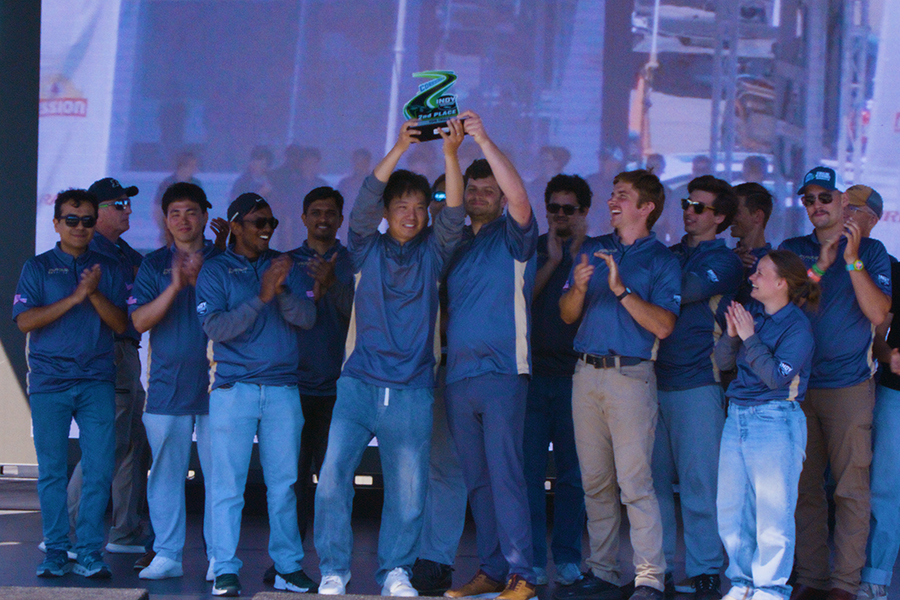Purdue AI Racing finishes as top U.S. team at IAC race in California

UPDATE:
During its exciting performance July 24 at WeatherTech Raceway Laguna Seca in Monterey, Calif., Purdue AI Racing garnered praise from the race’s announcers, who gushed over the team’s talent.
In its first run in this Indy Autonomous Challenge race, PAIR logged a speed of 131.713 — hundredths of a second behind the first-place team. In its second run, the car reached a high speed of 143.177 kph, a mere 1.236 seconds behind the race’s winner, Italy-based PoliMOVE-MSU. PAIR’s best lap time was 90.567 seconds.
The commentators described Purdue as having an “outstanding engineering program,” adding, “I am very impressed with the poise and maturity of this young team.”
One of the announcers went on to say that, over the last 12 months, the team went through “a total reorganization,” and “you can see the exponential jump in performance.”
PAIR also drew accolades for pitting early (“they knew what they had up their sleeve”); expertly maneuvering through the track’s infamous Corkscrew (“beautiful line”); and decision making (“very impressive tactics”).
ORIGINAL STORY:
Purdue AI Racing delivered a standout performance in the July 24 Indy Autonomous Challenge (IAC) race at WeatherTech Raceway Laguna Seca (Monterey, Calif.): second place, second-fastest lap, flawless execution on a demanding track and a triumphant chapter in their autonomous racing journey.
In a thrilling neck-and-neck finish, the Purdue car reached speeds of 143 kph+ and crossed the finish line a fraction of a second behind the No. 1 team, Politecnico di Milano, and ahead of KAIST, who came in third. The race was part of the IAC kickoff event that opened the NTT IndyCar Grand Prix weekend.
The team’s Dallara vehicle expertly maneuvered through the circuit — a 2.238-mile, 11-turn road course with its infamous “Corkscrew” drop. During the day, the car consistently logged clean laps, maintaining ideal racing lines through the Corkscrew’s blind precipitous descent and beautifully navigating every elevation change.
Yuchen Song, a PhD student at Herrick Laboratories in the School of Mechanical Engineering, is the vehicle dynamics and control team lead. Through his study of dynamics and development of control algorithms, he is pushing the team’s racecar to its speed and handling limits.
“Control is a bridge between raw mechanical power and intelligent mobility,” Song said. “In autonomous racing, every line of code translates into physical action on the track. That makes the challenge real and the reward tangible.”
The second-place finish underscores the maturity of the team’s software: localization that resists drift, planning that anticipates steep terrain, and control that reacts fluidly to dynamic track demands. While the team narrowly missed first, their performance demonstrates remarkable consistency and technical discipline. Against stiff competition, Purdue AI Racing has established itself as a formidable force in road'course autonomous racing — with the ability to conquer severe elevation changes, tight corner sequences, and high'stress sections with poise and precision.
